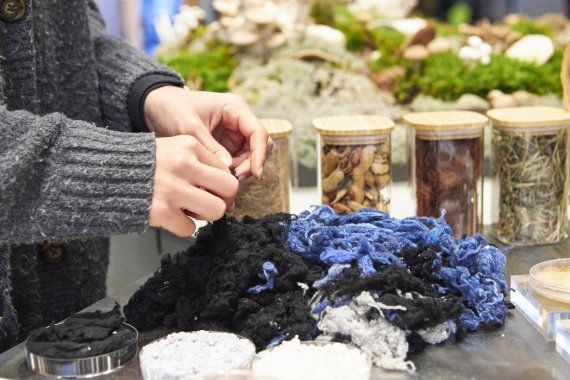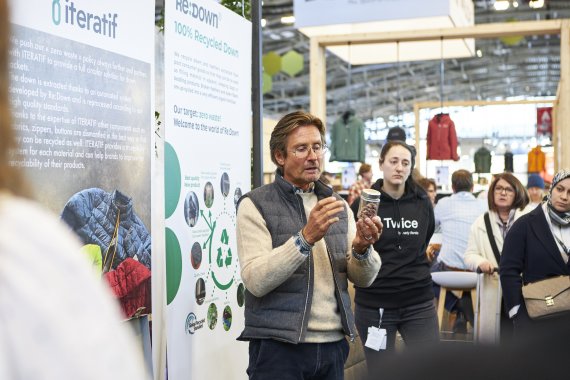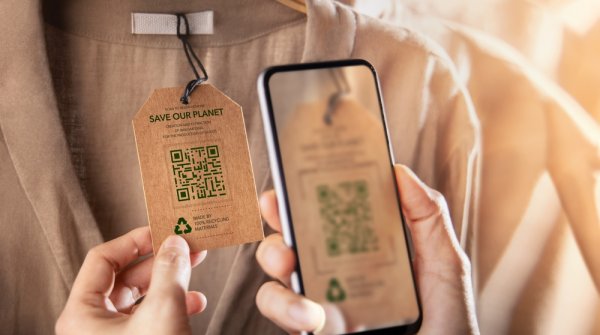Consumers are into sustainability, yes. But then inflation comes into play - and suddenly it's the price that counts. Sustainability? Often neglected after all. Retailers and brands have long been aware of this change in consumer behavior, which expert Frederik Ekström defines as "green fatigue". The brand strategist from Above The Clouds analyzed this consumer behavior and gets to the heart of the matter with his study. His survey of 2,500 Scandinavian consumers and 32 brand representatives clearly shows that the rules of the game are fundamentally changing - and that it is high time to respond.
Another exciting discovery made by Ekström: while the willingness to pay more for sustainable sportswear has decreased in all age groups, the younger generation is out of line. Despite rising prices, 82 percent of 18 to 34-year-olds are prepared to dig deeper into their pockets for fairly produced goods. This figure gives us hope, because the influence of Gen Z is growing inexorably! By 2030, they will make up 40 percent of the working-age population worldwide and represent the largest consumer group with a purchasing power of a whopping 33 trillion dollars.

"We see that 80 percent of consumers see sustainability as part of their identity," says Ekström. This young generation is setting completely new standards for coolness and environmental awareness. For them, sustainability is not a short-term trend, but a real lifestyle. And the best thing about it? Knowledge about environmental and climate issues is considered extremely attractive: 8 out of 10 Gen Z'ers feel physically attracted to people who live a sustainable lifestyle.
This means for brands: If you miss the Green Train, you run the risk of losing the connection to your target group! But be careful - just sticking green labels on hangtags is not enough. Gen Z recognizes greenwashing immediately and surprise: they are not a fan of it! They don't want hollow phrases, they want to see real change, store second-hand and have their favorite items repaired. They are looking for brands that don't just talk about sustainability, but actually live it. Brands that help them make informed decisions and bring their lifestyle in line with their values.
The advantage? The wishes of Gen Z are fully in line with current EU regulations. The Green Deal is putting the industry under pressure and forcing it to rethink its entire value chain: extended producer responsibility (EPR), the right to repair, due diligence obligations in supply chains, eco-design, deforestation regulations, sustainability reports ... you name it!
Meeting all these requirements is a huge challenge - especially for small and medium-sized companies or start-ups. They have to acquire the necessary know-how, monitor their supply chains, collect data, implement recycling measures and then communicate the whole thing properly. This costs manpower, money and a lot of energy. But there is also huge potential here: the attitudes of Gen Z described above can quickly turn the (ethical) commitment to sustainability into a decisive competitive advantage!
But how do I deal with the overwhelming complexity of the topic as a retailer or brand? How do I convert my processes to recyclable products? How do I design products that last forever and are still recyclable? How do I communicate sustainability issues without overwhelming my customers? And how can artificial intelligence help me to track and transparently map all aspects of the product life cycle, from my supplier's CO2 emissions to the second-hand online store?
The solution: the industry must move closer together, do pioneering work and share knowledge! ISPO Munich and OutDoor have long been more than just trade shows - they are the heart of the industry when it comes to sustainability. These platforms offer the unique opportunity not only to present groundbreaking sustainable materials, products and technologies, but also to experience them at first hand. They are the place where visionaries come together to discuss the latest developments and drive real change - whether it's the impact of the EU Green Deal on businesses, strategies for a transparent circular economy and carbon reduction, material innovations or the purchasing behavior of the new eco-consumer.

From December 3 to 5, ISPO Munich 2024 will once again be the ultimate hotspot for everyone who wants to know how to perfectly combine success and sustainability under the slogan "Love Every Contact". Whether you're a manufacturer, retailer, designer or just a curious sports enthusiast - you'll find everything you need to take your green know-how to the next level. And in four exciting categories: Find Solutions, Gain Insights, Make Experiences and Get Guidance. Fancy a sneak peek?
In the topic-specific hubs, current industry challenges meet innovative solutions and offer countless networking and business opportunities:
- As in previous years, the Sustainability Hub is the hotspot for brands that don't just preach sustainability, but live it. Here you can see how companies like Atomic, suppliers like the Südwolle Group and retailers like Globetrotter put sustainability into practice. And Patagonia is also involved as a partner!
- Wool, algae or fungal spores? You can experience bio-based materials up close in the Material Lab. Find out which regenerative fibers the future is made of and which game changers are improving the carbon footprint and making ecological products a reality.
- The Winter Lab is the kick-start for change in the winter sports industry. One thing is clear: the challenges we face cannot wait. This is where the industry comes together to deliver fresh ideas and push collaboration - far beyond winter sports.

Immerse yourself in the world of innovations for a sustainable future, presented by new and established brands. Here, leading brands such as Atomic, Globetrotter, Gore Tex, LYCRA, Aware, Carbon Fact, CompPair, Hyosung, Interzero, myclimate, Prolong, Re:Down, retraced, Südwolle, Fibre52, Kuraray and many more present their groundbreaking ideas and products.
Precise, well-founded and to the point: The ISPO Textrends are characterized by future-oriented materials that have been pre-selected by experts. They offer you a clear orientation in the jungle of the most sustainable material innovations and show which trends will shape the industry in the coming years.
Be inspired by the numerous presentations, keynotes and panels on the Green Stage, which will inspire you with in-depth insights and best practices from leading experts. Special highlight: bgreen leaders X ISPO Munich. The B2B sustainability network of Circulaze and Messe München brings start-ups and investors together and opens the doors to exclusive insights behind the scenes of the circular economy.

But the Green Stage is by no means the end of the story. In order to take a closer look at the topic of sustainability in other specialist areas and offer even deeper insights, there is an extensive accompanying conference program.
- Winter Sport Sustainability Network (WSN)
- BIOTEXFUTURE Fall Forum
What do they have to offer? Stay tuned!
Even if the sports industry takes the topic seriously: The journey to sustainability is not easy - and there is still a long way to go. So get ready for three days full of inspiration, innovation - and maybe even a bit of revolution. Because one thing is clear: nothing less than our future is at stake!
 Sports BusinessHow to ISPO Munich
Sports BusinessHow to ISPO Munich
- ISPO awards
- Mountain sports
- Bike
- Design
- Retail
- Fitness
- Health
- ISPO Job Market
- ISPO Munich
- ISPO Shanghai
- Running
- Brands
- Sustainability
- Olympia
- OutDoor
- Promotion
- Sports Business
- ISPO Textrends
- Triathlon
- Water sports
- Winter sports
- eSports
- SportsTech
- OutDoor by ISPO
- Heroes
- Transformation
- Sport Fashion
- Urban Culture
- Challenges of a CEO
- Trade fairs
- Sports
- Find the Balance
- Product reviews
- Newsletter Exclusive Area
- Magazine





